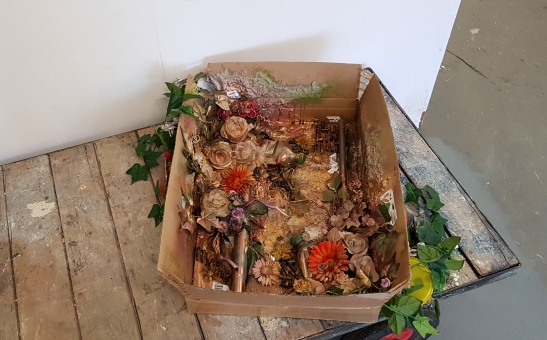The relationship between humans and nature has always been a focus of my work. The mutual dependency of the two is everlasting, and new landscapes have been created through the merging of manmade, industrial structures and natural, living growths. Manmade industries have become part of the ecology, and our chemicals are changing the planet’s makeup – the ghosts of our Anthropocene, as Anna Tsing would say. Researching these themes, I was interested in the gritty texture and depth, such as seen in Anselm Kiefer’s and Valerie Hegarty’s works. Anselm Kiefer’s unconventional materials embedded in his paintings conveyed the eerie feelings he explored about Germany’s WW2 history. The led, ash, clay and other materials he used conveyed a narrative and inspired me to expand on my materials, really looking into our landscapes and their composition. Hegarty’s expressive nature in how she arranges the flowers and materials in her work encouraged me to be ambitious and experimental in my compositions, layering my materials in energetic arrangements. I explored textures, through concrete, paint, cardboard, plastic and layered these creating depth. Using materials of my theme, such as plastic flowers, real leaves and petals, moss, branches, plastic rubbish, scrap metal, nails and cigarette buds I achieved a unique blend of harsh and soft, life and decay – reminiscent of the landscapes surrounding us. Using acrylic paint and spray paint I added further depth and dimension, using bronze and gold spray inspired by the Steampunk movement, giving a lush yet mechanical contrast towards the green and earthy palette of my piece. This idea of growth is not only shown by the excess layering of different materials – it is also represented in my frame, or disruption of the modernist frame. Interested in Kurt Schwitters’ Merzbau, in which he extended his paintings and collages into his ever-growing cathedrals, I created my piece to have a strong frame, a confined, architectural barrier created through the acrylic sheet, which is disrupted by geometrical cut- outs. These sharp cut- outs show the mixture of natural and industrial textures growing out of the frame, its confinement, mimicking how the pollution and change of our landscape is not only present, but ever-growing. In Ian Sinclair’s London Orbital style, I topped off this composition with paintings of obstructing yet complimenting industrial constructions on the acrylic sheet, I photographed whilst (like with this project) going on an adventure through our landscapes.
Week 11: Refined Plans For My “Final Piece”
 Refining my ideas for my ambitious piece, I drew out plans to visualise materials, functionality and composition. I decided to get an acrylic sheet instead of glass, enabling me to get a large piece without causing too much weight. The transparent acrylic sheet will be covering a deep set frame I will be making in the workshop, size 94cm x 122.3cm. This size will give me plenty of space to build up a lot of layers and expand to bigger scrap metal pieces, in the 10cm deep frame. I will also make cut outs in the acrylic sheet, as I really wanted to think about the idea of the traditional frame and the extension/ disruption of it. Inspired by Kurt Schwitters’ Merzbau, in which he extended his paintings into cathedrals, I planned this sleek frame which is disrupted by cut- outs, having my mixture of natural and industrial textures grow out of this confinement. Below, I made sketches of what composition to go for in terms of cut- outs, where to build up my layers and also which parts of my photographs I want to paint and where. I decided to go with design 3 for my piece, as the rectangle cut- outs compliment the strong lines and shapes of the buildings in my photographs and the metal pipes I intend to use in the piece. The composition seems dynamic whilst still being balanced. I also liked the photographs I chose for this design, as the buildings look especially structural and their colour schemes will go well with the colours of my piece overall.
Refining my ideas for my ambitious piece, I drew out plans to visualise materials, functionality and composition. I decided to get an acrylic sheet instead of glass, enabling me to get a large piece without causing too much weight. The transparent acrylic sheet will be covering a deep set frame I will be making in the workshop, size 94cm x 122.3cm. This size will give me plenty of space to build up a lot of layers and expand to bigger scrap metal pieces, in the 10cm deep frame. I will also make cut outs in the acrylic sheet, as I really wanted to think about the idea of the traditional frame and the extension/ disruption of it. Inspired by Kurt Schwitters’ Merzbau, in which he extended his paintings into cathedrals, I planned this sleek frame which is disrupted by cut- outs, having my mixture of natural and industrial textures grow out of this confinement. Below, I made sketches of what composition to go for in terms of cut- outs, where to build up my layers and also which parts of my photographs I want to paint and where. I decided to go with design 3 for my piece, as the rectangle cut- outs compliment the strong lines and shapes of the buildings in my photographs and the metal pipes I intend to use in the piece. The composition seems dynamic whilst still being balanced. I also liked the photographs I chose for this design, as the buildings look especially structural and their colour schemes will go well with the colours of my piece overall.



Week 10: Researching Nigel Cooke
In preparation of painting some industrial buildings for my “final piece”, I wanted to research some unconventional painting methods. Nigel Cooke is a British painter who has a very interesting technique. He builds up colour in a way where he would build up colour and add a wash of white in between the layers, creating this translucency in between the colours, creating depth and this very interesting build up of mark making. In some layers, he would even remove certain parts of the painting that he would leave out in a new layer, such as the sun mentioned in the video, creating the memory of it; a slight hint of a part of the composition having existed but now in the past. I think this is a very interesting idea, especially as I work with ideas of growth and decay, past and future. I would like to incorporate a worn look in my paintings and using this technique I believe will create a very interesting feeling in the painting. Also, removing certain architectural elements of the buildings I want to create, and bringing some back in, will not only reinforce strong shapes and constructs but also play with the idea of a memory and eerie pasts of the landscape.
Week 10: Undertaking My Own Journey Of The Landscape And Photographing It


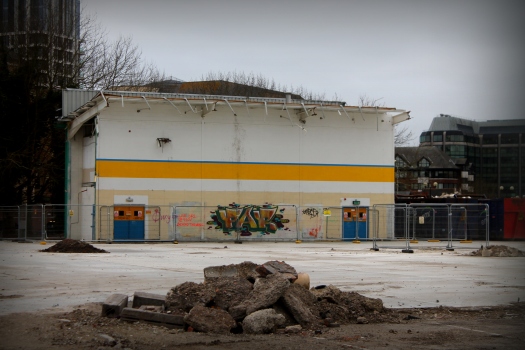
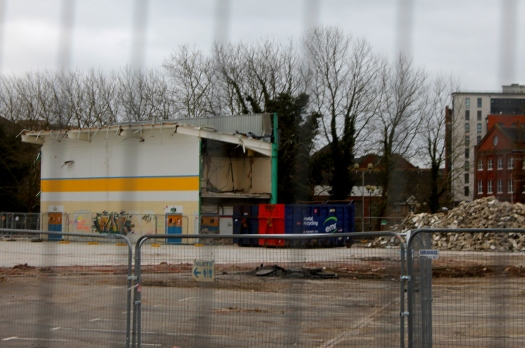
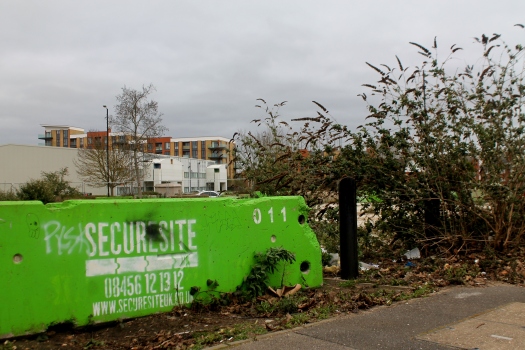
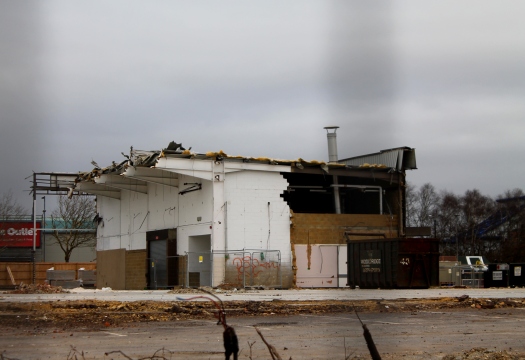



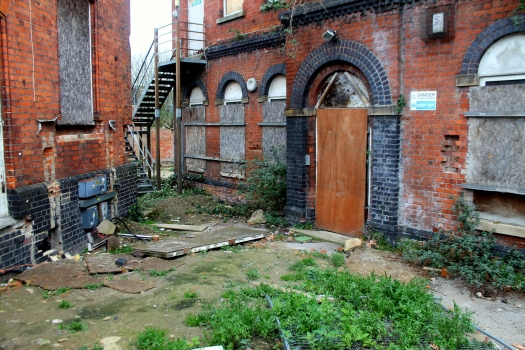
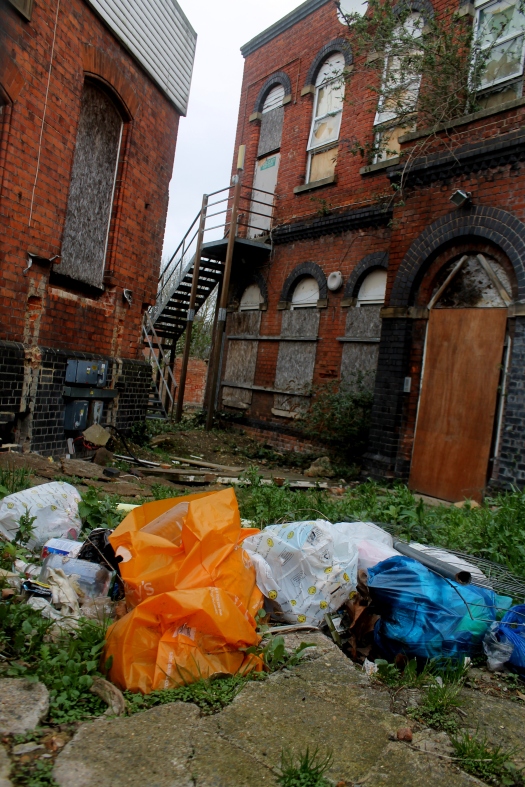
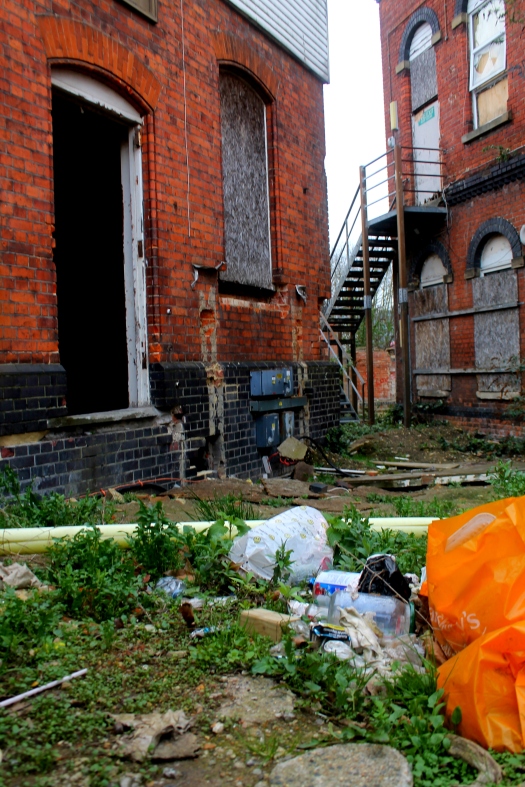
Week 9: Researching Ian Sinclair’s “London Orbital”
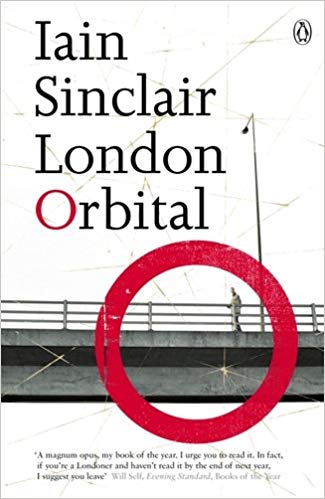
“Encircling London like a noose, the M25 is a road to nowhere, but when Iain Sinclair sets out to walk this asphalt loop – keeping within the ‘acoustic footprints’ – he is determined to find out where the journey will lead him. Stumbling upon converted asylums, industrial and retail parks, ring-fenced government institutions and lost villages, Sinclair discovers a Britain of the fringes, a landscape consumed by developers. London Orbital charts this extraordinary trek and round trip of the soul, revealing the country as you’ve never seen it before.”
https://www.penguin.co.uk/books/547/54739/london-orbital/9780141014746.html
“Driving Around the road was useless, as I discovered when I endured 250 miles in a day, with Chris Petit, clockwise and anticlockwise, coming on off my old favourite, the A13. And detouring into Lakeside, Thurrock. Into Theobalds Park and Heathrow. More was less, further was nowhere… Nobody can decide how long the road is, somewhere between 117 and 122 miles. By the time you’ve driven it, you don’t care. You should be way out in another eco- system, another culture: Newport (Mon.), or Nottingham, or Yeovil. The Journey must mean something. Not a wearied return, hobbled, to the point of origin. It was obvious, therefore, that the best way to come to terms with this beast was to walk it.”
Sinclair, Ian, London Orbital, London: Penguin Books, 2003, P. 185 – 193
This book was very interesting, especially as Sinclair is interested in areas that one would not usually walk through. Walking motorways and the nature paths next to them can lead you to areas one would not usually find – which is a very interesting quality I am looking for in my photographs. The way is the target, and going off track is welcome, and Sinclair has inspired me to walk off track to find unusual buildings and constructions. Next to being inspired by the Boyle family in selecting my area randomly on a map, I am also interested in walking around areas near the motorway, to expand my search.
Week 9: Initial Plans And Risk Assessment



 My initial idea for my next piece was to create a deep set frame with a glass cover, hanging from a metal frame. The metal frame was inspired by Anselm Kiefer’s beautiful installations, where he uses metal frames to present his large scale paintings. I really wanted to include a glass cover, inspired by some panels of Rauschenberg’s self portrait, where he used transparent Lexan that has been silk- screened. The paintings he layered on top inspired me to include a transparent cover for the deep set frame I want to work with, to create a layer to paint parts of my photographs on. However, assessing the risks of my plan, glass would be too heavy, as I will want my piece to be quite big. Furthermore, whilst an architectural feeling of a metal frame would compliment my piece very well, I would like to find a way of hanging my piece that allows the deep set box to stand out. I will be thinking about what to use as a transparent cover, as well as coming up with a more detailed plan.
My initial idea for my next piece was to create a deep set frame with a glass cover, hanging from a metal frame. The metal frame was inspired by Anselm Kiefer’s beautiful installations, where he uses metal frames to present his large scale paintings. I really wanted to include a glass cover, inspired by some panels of Rauschenberg’s self portrait, where he used transparent Lexan that has been silk- screened. The paintings he layered on top inspired me to include a transparent cover for the deep set frame I want to work with, to create a layer to paint parts of my photographs on. However, assessing the risks of my plan, glass would be too heavy, as I will want my piece to be quite big. Furthermore, whilst an architectural feeling of a metal frame would compliment my piece very well, I would like to find a way of hanging my piece that allows the deep set box to stand out. I will be thinking about what to use as a transparent cover, as well as coming up with a more detailed plan.
Week 9: Looking For Materials At A Skip




Week 9: Researching The Boyle Family





Going through the reading material in the student common room, I found a book about the Boyle family, giving an insight into their photography of industrial landscapes.
“Boyle Family is a group of collaborative artists based in London. Mark Boyle and Joan Hills met in Harrogate, Yorkshire in 1957. Joan had studied art and architecture and was bringing up her first son Cameron whilst running her own business. Mark was in the army, writing poetry. After a period of working separately on visual art pieces, they incrementally moved into a natural collaboration – agreeing that art should not exclude anything as a potential subject.
Wherever Mark and Joan lived became their studio, so it seemed natural and necessary that friends and family be co-opted to help whenever there was a big show going off or an event to put on. From very early on, Mark and Joan’s children, Sebastian and Georgia, went around the studio, doing bits here and there, gradually getting more deeply involved: going on working trips, expeditions, helping to finalise and hang exhibitions. This co-creational approach also was applied to the evolution of the work itself and led to innovative and collaborative partnerships with many artists, performers, musicians, filmmakers and dancers, notably Jimi Hendrix and the psychedelic jazz-rock pioneers Soft Machine…Boyle Family aims to make art that does not exclude anything as a potential subject. Over the years, subjects have included: earth, air, fire and water; animals, vegetables, minerals; insects, reptiles, water creatures; human beings and societies; physical elements and fluids from the human body. The media used have included performances and events; films and projections; sound recordings; photography; electron-microphotography; drawing; assemblage; painting; sculpture and installation.”
Reading about the Boyle family, it is clear that they have explored the landscapes around us, in a variety of ways. I was looking at a booklet on the Dockland series and found their photographs very interesting. In the book, Boyle described their technique as photographing natural compositions, a composition so perfect it can only be created by chance:
“Joan and I were staring at a frame lying among all this junk on a bombsite, one of those rectangular grey plastic fillets that used to hold the screen of a TV in place. It seemed to us that the arrangement of earth and rubbish inside the frame was absolutely perfect. We thought it was maybe the fact of he framing that made it seem so right, so we tried moving the frame to see if it worked anywhere else. No matter where we placed it, it looked wrong, precious or contrived. Eventually it occurred to us that the reason the original site seemed perfect could be that it was natural, because it had just happened like that. So we threw the frame away across the site and wandered over curiously to see what we would find. Again, it was perfect. We spent the rest of that day taking turns and alternately placing the frame deliberately and throwing it away; and every time we placed it, it looked wrong and every time we threw it, it looked just right.”
Boyle Family, Dockland Series, London: Runkel- Hue- Williams LTD, 1991
This really gave me a new perspective of looking at landscapes and capturing photographs. From my earlier research and experiments, I was already interested in bringing back some figurative painting into my work, and looking at the Boyle family’s photographs, I became very keen on going out and taking photographs of industrial buildings myself. Inspired by the way they photographed their work, I will be sure to pay attention to what comes into my photography frame by chance, inspecting all the details of how the landscape has been arranged and how a random choice of arrangements could affect my pictures. In this booklet, I also read about an interesting technique they used to select what location they would shoot in: they used darts and threw them on a map of London and where it landed, they would look for arrangements to photograph. I want to use a similar technique of choosing a random spot in reading, by closing my eyes and picking a location on a map. This will really push me to work with the location I get, and inspect the surroundings in places one might usually oversee. I aim to find abandoned constructions, industrial places that I can incorporate in my work, to give my materials even more narrative and to break up the “clutter” with elements that will compliment the overall composition.
Week 8: Photographing The Event/ Exhibition





 One reason I set up my work in this place was because the other works next to mine really worked together. The beautiful hangings compliment the abstract parts of my works, whilst extending the green colours into the room. The earthy colours of the portrait next to my pieces complimented the bronze spray paint and brown tones in my work, creating a harmonic corner of the exhibition. The portrait also created an immediate connection between humans and my presentation of our landscapes.
One reason I set up my work in this place was because the other works next to mine really worked together. The beautiful hangings compliment the abstract parts of my works, whilst extending the green colours into the room. The earthy colours of the portrait next to my pieces complimented the bronze spray paint and brown tones in my work, creating a harmonic corner of the exhibition. The portrait also created an immediate connection between humans and my presentation of our landscapes.
Week 8: Experimenting With Different Ways Of Display And Setting Up For The Exhibition
 I found a large cart in the studio and arranged with members of staff that I will be able to use it to install my work. I think the cart really goes with my work – the worn look and industrial background of the piece extends my work in a complimentary way. I laid my big piece on the side of the cart, inviting viewers to sit down, enabling them to really inspect my piece and all its details up close. I then experimented with different arrangements of hanging my other paintings. I felt the first composition was too bottom heavy, and therefore rearranged the larger piece on the wall further up.
I found a large cart in the studio and arranged with members of staff that I will be able to use it to install my work. I think the cart really goes with my work – the worn look and industrial background of the piece extends my work in a complimentary way. I laid my big piece on the side of the cart, inviting viewers to sit down, enabling them to really inspect my piece and all its details up close. I then experimented with different arrangements of hanging my other paintings. I felt the first composition was too bottom heavy, and therefore rearranged the larger piece on the wall further up.

 Arranging the pieces, I first wanted to see what it would look like with only 3 on the wall, arranged leading up, complimenting the bottom heavy cart installation. However, I then added the fourth piece to the wall and preferred this look; the salon style of all the pieces create a puzzle, merging the textures of the different works. The close hanging of the pieces balances out the big cart beneath, whilst still leading the viewer down towards the piece laying on the cart, complementing it well. I then painted the floor and placed the cart and main piece back in the center of the wall.
Arranging the pieces, I first wanted to see what it would look like with only 3 on the wall, arranged leading up, complimenting the bottom heavy cart installation. However, I then added the fourth piece to the wall and preferred this look; the salon style of all the pieces create a puzzle, merging the textures of the different works. The close hanging of the pieces balances out the big cart beneath, whilst still leading the viewer down towards the piece laying on the cart, complementing it well. I then painted the floor and placed the cart and main piece back in the center of the wall.

